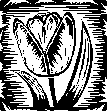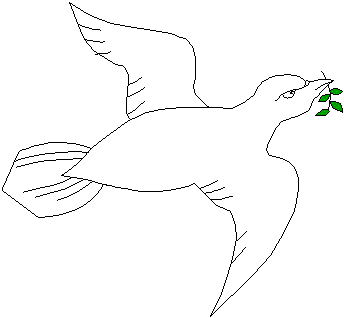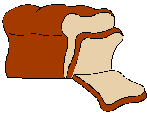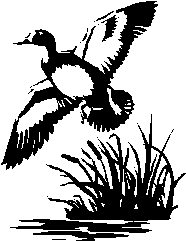

X
This is the day the Lord hath made;
let us be glad and rejoice therein. Ė Ps. 117.24
|
With this antiphon, the Church proclaims Easter Sunday the greatest day of the year. For the Christian believer every day is, of course, a celebration of Jesus Christís resurrection from the dead, as is every Mass. Yet daily rejoicing pales in comparison to that of the Sunday Mass, since Sunday is the day that the resurrection took place, the "eighth" day of the week signifying a new creation and a new life. And these Sundays of the year, in turn, are dwarfed by Easter, the Feast of Feasts celebrated in the newness of the vernal moon and in the rebirth of springtime. Easter is the Christian day par excellence. The commemoration of our Lordís physical resurrection from the dead provides not only the crucial resolution to the Passion story, but to several liturgical themes stretching back over the past two months. Easter ends the seventy days of Babylonian exile begun on Septuagesima Sunday by restoring the Temple that was destroyed on |
Good Friday, i.e. the body of Jesus Christ. It ends the forty days of wandering in the desert begun on Ash Wednesday by giving us the Promised Land of eternal life. It ends the fourteen days of concealment and confusion during Passiontide by revealing the divinity of Jesus Christ and the meaning of His cryptic prophecies. It ends the seven days of Holy Week by converting our sorrow over the crucifixion into our jubilance about the resurrection. And it ends the three days of awesome mystery explored during the sacred Triduum by celebrating the central mystery of our faith: life born from death, ultimate good from unspeakable evil. It is for this reason that all the things that had been instituted at one point or another during the past penitential seasons (the purple vestments or the veiled images) are dramatically removed, while all the things that had been successively suppressed (the Alleluia, the Gloria in excelsis, several Gloria Patriís, or the bells) are dramatically restored.
|
The Easter season (or Paschaltide, as it is traditionally known) is not an undifferentiated block of joy but one that consists of several distinct stages. The first is the Easter Octave, lasting from Easter Sunday to "Low" Sunday. These eight days comprise a prolonged rejoicing in our Saviorís victory over death and in the eternal life given to the newly baptized converts. In fact, Christian initiates used to receive a white robe upon their baptism on Holy Saturday night and would wear it for the rest of the week. They would take off these symbols of their new life on the following Sunday, which in Latin is called Dominica in albis depositis as a result of this practice. (The English name, Low Sunday, was used as a contrast to the high mark of Easter). For centuries the first Sunday after Easter was also the day when children would receive their first |
Holy Communion, often with their father and mother kneeling beside them. So meaningful was this event that in Europe it was referred to as the "most beautiful day of life." (Significantly, both customs are encapsulated in Low Sundayís stational church, the basilica of St. Pancras (see Station Days): St. Pancras, a twelve-year-old martyr, is the patron saint of children and neophytes). Finally, in addition to the two Sundays of the Easter Octave, several of the weekdays within the Octave assumed a special importance (see below).
The close of the Easter Octave, however, does not end the jubilance of Paschaltide. The Allelulia continues to be used copiously in the Mass and in the divine office; the Vidi Aquam and Regina cúli continue to replace the Asperges and Angelus; and the Paschal candle still burns bright. Nevertheless, a discernible shift in mood and meaning takes place. The weekdays no longer have their own set of Mass propers, while the Sunday propers tend to focus less on the specific events of the Resurrection and more on the general legacy of Christís victory. There also occurs an interesting "triduum" immediately prior to the Feast of the Ascension known as the Lesser Rogation Days (see Rogation Days, etc.). Instituted in the 400s by St. Claudianus Mamertus in response to a series of natural catastrophes that were plaguing the diocese of Vienne in Dauphiny, the observance soon spread to the rest of France in the sixth century and then to Rome in the ninth. Rogationtide consists of penitential processions from or to the church during which are prayed poignant litanies petitioning for deliverance from a multitude of evils. Because these rogations were often agricultural, processions would often be conducted into the field for the priest to bless the crops. The Lesser Rogation Days were also once considered an ideal time to mend any personal rifts between parishioners (see below).
|
This phase of Paschaltide also marks an anticipation of and preparation for the next cardinal event that the Church celebrates: the Ascension of our Lord into heaven forty days after His resurrection. In a sense this feast ends the Easter revelry: after the Gospel is read during the Ascension Thursday Mass, the Paschal candle is extinguished. It does not, however, end Paschaltide. The nine days that the Apostles spent in prayer from Ascension Thursday to Pentecost provide not only the archetypal inspiration for all later novenas but the eagerly awaited build-up for what is often called the birthday of the Church, the Feast of Pentecost, or Whitsunday. This is the day that the Holy Spirit descended on the Apostles, giving them the grace and resolve to teach and convert all nations. The feast is fitting |
||
|
for a number of reasons. First, it corresponds to the Jewish feast of Pentecost, the great religious and agricultural festival of First Fruits. The Christian Pentecost, on the other hand, celebrates the first fruits of the Holy Spirit and of all our Lordís promises. (The Pentecost Octave is considered an ideal time to meditate on the seven gifts of the Holy Spirit.) And just as the Jewish Pentecost is celebrated fifty days after Passover, the Christian Pentecost is celebrated fifty days after Easter ("Pentecost" is the Greek word for fifty). God also revealed the Law to Moses on Mount Sinai fifty days after the first Passover, and so it is fitting the New Law was promulgated by the Apostles fifty days after it was ratified by the Lamb of Godís self-sacrifice. |
||
Finally, the week after Pentecost constitutes the concluding stage of the Easter season, which quietly ends on the following Saturday afternoon. One distinctive feature of this week that bears special mention are the Ember Days. It no doubt strikes us as odd that three days of the jubilant Octave of Pentecost are reserved for fasting. This befuddlement has much to do with a common misconception about fasting, which tends to see the practice as a sign of contrition and sorrow. As is clear from the Mosaic Law, however, fasting can be joyous as well as penitential. In fact, it can express a variety of moods and serve a number of purposes. In the case of the Whitsundaytide Ember Days (as Pope St. Leo the Great once explained), the Apostles were commissioned by the Spirit to embark on a great mission, but before doing so they readied themselves with a holy fast by which they could more effectively wage war against the forces of evil. This was not a fast of mourning, but a fast of gladsome training and preparation. By following the example of the Apostles, St. Leo tells us, we too are joyfully preparing ourselves for our mission as witnesses of Christ to an unbelieving world. Having undergone the purgation of Lent and the sanctification of Paschaltide, we too are poised to burst out of the closed doors and speak the Good News of salvation.
The progression of Paschaltide can therefore be summarized as follows:

Easter Octave:
Easter Sunday. The feast of the Resurrection. Traditional Easter dinner, etc. (see below).
Easter Monday. The Emmaus Walk, "drenching" and "switching."
Easter Thursday. Commemoration of the departed (Slavic).
Easter Friday. A favorite day for pilgrimages.
Low Sunday. The most privileged Octave-day of the year. First communion for children.
Additional Sundays of Paschaltide:
Good Shepherd Sunday. A reflection on what it took to make Christ the gentle shepherd of our souls.
Third Sunday After Easter. An exhortation on how Christís flock is to conduct itself and an oblique allusion to the Ascension.
Fourth Sunday After Easter. A description of the meekness and patience of Christís flock and an explanation of the necessity of the Ascension.
Fifth Sunday After Easter. The liberty of the New Covenant and its perfection in prayer and the Spirit.
Monday before Ascension Thursday: Rogation Day. See Rogation Days, etc.
Tuesday before Ascension Thursday: Rogation Day. See Rogationtide below.
Wednesday before Ascension Thursday: Rogation Day.
From Ascension Thursday to Pentecost (the First Novena):
Ascension Thursday. Forty days after Easter, our Lord ascends into heaven. The Paschal candle is extinguished (see below).
The Sunday within the Octave of the Ascension. A joyous preparation for Pentecost.
The Octave of Pentecost
Pentecost (Whitsunday). Fifty days after Easter, the descent of the Holy Spirit on the Apostles. One of the three great feasts of the liturgical year.
Ember Wednesday within the Octave of Pentecost. See Ember Days, etc.
Ember Friday within the Octave of Pentecost.
Ember Saturday within the Octave of Pentecost. The end of Paschaltide (after the office of None on Saturday afternoon).
Paschaltide Customs
The Easter Kiss and Greeting
The day that the risen Christ appeared to His apostles, breathed the Spirit on them, and wished them peace is the day that Christians greet each other with special fraternal affection. Early Latin Christians embraced each other on Easter with the greeting, Surrexit Dominus vere ("The Lord is truly risen"). The appropriate response is Deo gratias ("Thanks be to God"). Greek Christians, on the other hand, say, Christos aneste ("Christ is risen"), to which is answered, Alethos aneste ("Truly He is risen"). The mutual kiss and embrace last throughout the Easter Octave.
Blessings
There was a time in both the Eastern and Western churches that no one would dream of eating unblessed food on Easter. Priests would either visit families on Holy Saturday night and bless the spread made ready for the following day, or they would bless the food brought to church after the Easter Sunday Mass. The old Roman ritual attests to this tradition by its title for Food Blessings: Benedictiones Esculentorum, Praesertim in Pascha Ė "The Blessings of Edibles, Especially for Easter." Blessings for several foods are given below.
New Clothes & the Easter Parade
Most people are familiar with the old-fashioned images of ladies bedecked in crisp new bonnets and dapper escorts during the annual Easter parade. What at first blush appears to be no more than a spectacle of vanity, however, is a combination of two deeply religious practices. The first is the custom of wearing new clothes for Easter. This stems from the ancient practice of newly baptized Christians wearing a white garment from the moment of their baptism during the Easter Vigil until the following week. The rest of the faithful eventually followed suit by wearing something new to symbolize the new life brought by the death and resurrection of Christ. Hence an old Irish saying: "For Christmas, food and drink; for Easter, new clothes." There was even a superstition that bad luck would come to those who could afford new clothes for Easter but did not buy them.
The second practice is the Easter walk, in which the faithful (mostly couples) would march through town and country as a part of a religious procession. A crucifix or the Paschal candle would often lead the way, and the entourage would make several stops in order to pray or sing hymns. The rest of the time would be spent in light banter. This custom became secularized after the Reformation and thus became the "Easter parade" so popular before the 1960s.
Easter Eggs

Two kinds of activities (besides eating) surround this famous feature of Paschal celebration. The first is the decoration of the egg, a custom that goes back to the first centuries of Christianity. Colored dyes are the easiest way this is done, though different customs from various cultures sometimes determine which colors are used. The Chaldean, Syrian, and Greek Christians, for example, give each other scarlet eggs in honor of the most precious blood of Christ. Other nations, such as the Ukrainians and Russians, are famous for their beautiful and ornate egg decorations.
Egg games are also a familiar part of Easter merriment. Most Americans are familiar with the custom of Easter egg hunts, but there are other forms as well. Egg-pecking is a game popular in Europe and the Middle East (not to mention the White House lawn), where hard-boiled eggs are rolled against each other on the lawn or down a hill; the egg left uncracked at the end is proclaimed the "victory egg."
For more on the meaning of the Easter egg and the rituals surrounding its consumption, see below.
The Dancing Sun

There is an old legend that the sun dances for joy or makes three cheerful jumps on Easter morning. In England and Ireland families would place a pan of water in the east window to watch the dancing rays mirrored on it. Other "sun" customs involve some kind of public gathering at sunrise. Greeting the daybreak with cannons, gunfire, choirs, or band music was once very popular, as was holding a prayer service, followed by a procession to the church where Mass would be offered.
"Sacred" Theater
According to some scholars the beautiful sequence Victimae Paschali Laudes sung during the Easter Mass in the traditional Roman rite is the inspiration for the development of medieval religious drama. The poemís dialogic structure, with its question and answer format, became the foundation on which more lines were added until a separate play was formed. This play, in turn, inspired the composition of the other medieval "mystery" plays held on Christmas, Epiphany, Corpus Christi, and so on.
Solemn Vespers & Benediction
|
Solemn vespers and benediction were a traditional part of every Sunday afternoon in many parishes, but especially so on Easter. Perhaps one reason for this was the medieval custom of Easter fables where, prior to the service, the priest would regale the congregation with amusing anecdotes and whimsical yarns. This served as a sort of antidote to the many sad or stern Lenten sermons of the previous weeks. |
|
The entire Octave of Easter constitutes an extended exultation in Christís victory over death. Obviously, the two most important days of this Octave are the two Sundays. As mentioned above, Low Sunday was once the day that the neophytes took off their white robes and resumed their lives in the daily world, and it was also the traditional time for children to receive Holy Communion. Other days of the Octave, however, also had distinctive customs of their own. Easter Monday was reserved as a special day for rest and relaxation. Its most distinctive feature is the Emmaus walk, a leisurely constitution inspired by the Gospel of the day (Luke 24.13-35). This can take the form of a stroll through field or forest or, as in French Canada, a visit to oneís grandparents. Games of mischief dating to pre-Christian times also take place on Easter Monday and Tuesday. Chief among them are drenching customs, where boys surprise girls with buckets of water, and vice versa, or switching customs, where switches are gently used on each other. Easter Thursday in Slavic countries, on the other hand, was reserved for remembering departed loved ones. Mass that day would be offered for the deceased of the parish. Finally, Easter Friday was a favorite day for pilgrimages in many parts of Europe. Large groups would take rather long processions to a shrine or church, where Mass would be offered.
The Lesser Rogation Days prior to the Ascension were especially important in rural communities dependent on agricultural bounty. They were also the inspiration for a number of semi-liturgical imitations, where farmers would take holy water and douse their fields for protection and blessing. Perhaps this would be a good time to have oneís garden blessed.
Another interesting feature of Rogationtide is the tradition of having parishioners end resentments or conflicts that had been festering between them. Eoman Duffyís The Stripping of the Altars includes vivid accounts from pre-Reformation England of some of these reconciliations.
Ascension Plays
In the early centuries the Church celebrated the Feast of the Ascension with elaborate processions that imitated Christís conducting His Apostles to Bethany (Lk. 24.50). Eventually, however, these liturgical processions became nonliturgical pageants, and the pageants, in turn, became plays. Ascension Thursday was a day for special effects. This could happen in a dignified way during the Mass, as when in Germany the priest would lift a crucifix during the Gospel at the words, "He was taken up into heaven," or it could happen in a dramatic way after Mass with a theatrical representation of the Ascension event. Statues of the risen Christ would be hoisted by pulleys into the air and then either concealed by white silk representing clouds or pulled through an opening in the ceiling. The audience would then be showered with roses, lilies, and wafers. The flowers symbolized the various gifts of the Holy Spirit promised by Christ before He left, while the wafers reminded all that Jesus is still present to us in the Blessed Sacrament.
Hiking
In Central Europe Ascension Thursday is a popular day for mountain climbing or picnicking on hilltops. No doubt this is in commemoration of the summit of the Mount of Olives from which Christ ascended and the heights to which he soared. A similarly inspired tradition is eating some kind of bird for the Feast since on this day Christ "flew" to Heaven (see below).
Rest
Like any other solemnity, Ascension Thursday is supposed to be a day of rest and liberal leisure. For some reason or another, however, traditional folklore treats this observance for today with particular severity. Popular superstitions warned against working in field or garden, and special punishments were purportedly reserved for women who sewed. Any needle, it was thought, that was used for work on Ascension Thursday would soon attract lightning!
3. The Sunday after Ascension and the Roses
Because this Sunday eagerly awaits the coming of the Holy Spirit (see the Mass propers), it is not surprising that there was once a special papal ceremony to foreshadow the Pentecost event. On this day the Pope would celebrate Mass in the church of Santa Maria Rotonda, the former Pantheon in Rome with its large opening in the ceiling. After his sermon, roses were thrown from the opening as a symbol of the Paracleteís imminent arrival. From this custom comes the original name of the Sunday: Dominica de Rosa.
White Sunday?
The liturgical color of this Sunday is red in order to recall the tongues of flame that descended on the Apostles. The old English name for Pentecost, Whitsunday, originated from the custom of the newly baptized redonning their white robes for the services of the day. By extension this could also apply to the new Easter clothes worn by the faithful fifty days earlier.
The Dove

Like Ascension Thursday, Whitsunday was once the occasion for several liturgical eccentricities. Many medieval churches, for example, had a Holy Ghost Hole in the ceiling of the church from which a large blue disk bearing the figure of a white dove would swing slowly down to the congregation during the Mass sequence, Veni Sancte Spiritus. Midway through the sequence, the disk would stop and from the Holy Ghost hole would rain symbols of the Spirit: flowers, water, even burning pieces of straw. A practice far less susceptible to excess, on the other hand, is the use of beautifully carved and painted wooden doves in the home. These figures would usually be suspended over the dinner table, and would sometimes be encased in glass, having been assembled entirely from within (much like the wooden ships assembled in bottles). The painstaking effort that went into making these doves serves as a reminder to cherish the adoration of the Holy Spirit.
The Blessed Dew
Though the inspiration of the Holy Spirit is often described in dramatic terms (a mighty wind, tongues of fire, etc.), it is also portrayed in soothing, comforting ways. The Whitsunday sequence Veni Sancte Spiritus, for example, calls the Spirit our "sweet refreshment" (dulcis refrigerium), while the postcommunion prayer, in an allusion to Isaiah 45.8, refers to the "inward sprinkling of His heavenly dew." Hence there arose the charming superstition that the morning dew of Whitsunday is especially good luck. To obtain a blessing, people would walk barefoot through the meadows before Mass and would even feed their animals with bread wiped by the dew.
Lamb
The lamb is the most significant symbol of Easter, not to mention one of the oldest. The reason is obvious. Jesus Christ is the Passover lamb of God, the unblemished male whose act of self-sacrifice keeps away the angel of eternal death. Accordingly, Christians often cooked a whole lamb for the Easter supper, resting it on a bed of evergreen and surrounding it with colored eggs, breads, meats, cheeses, etc. The Roman ritual even contains a special blessing for the Paschal lamb:
O God, who during the deliverance of Thy people from Egypt ordered through Thy servant Moses that a lamb be killed in the likeness of our Lord Jesus Christ, and commanded that afterwards the blood of the same lamb be put on the door-posts of the houses: do Thou deign to bless and sanctify this meat, which we Thy servants desire to receive for Thy praise, through the resurrection of the same Jesus Christ, our Lord, who liveth and reigneth unto endless ages. Amen.
Deus, qui per famulum tuum Moysen, in liberatione populi tui de Aegypto, agnum occidi jussisti in similitudinem Domini nostri Jesu Christi, et utrosque postes domorum de sanguine ejusdem agni perungi praecepisti: tu benedicere et sanctificare digneris hanc creaturam carnis, quam nos famuli tui ad laudem tuam sumere desideramus, per resurrectionem ejusdem Domini nostri Jesu Christi, qui tecum vivit et regnat in saecula saeculorum. Amen(p. 239).
Eggs
Though the Easter egg has a pagan origin that long predates Christianity, it has become a quintessentially Christian way to commemorate the Pasch. The egg is a natural symbol of springtime and a supernatural symbol of Christís triumphant emergence from the hard shell of His stone tomb. Under more ascetical times eggs were also one of the foods banned during Lent, so their presence on the Easter table marked a welcome dietary change and an end to the period of sackcloth-and-ash. Little wonder that from early times on gaily-painted eggs were a popular Easter gift.
As mentioned above, food blessings were considered quite important for the Easter supper, and the Easter egg was no exception. In several Slavic countries, for example, the meal begins with a blessed egg solemnly distributed by the father to his dinner companions. The Roman ritual also contains a special blessing for the humble Easter egg:
May the grace of Thy blessing, we beseech Thee, O Lord, come upon these eggs, that they may become a wholesome food for Thy faithful, who gratefully receive them in honor of the Resurrection of our Lord Jesus Christ, who liveth and reigneth unto endless ages. Amen.
Subveniat, quaesumus Domine, tuae benedictionis gratia, huic Ovorum creaturae: ut cibus salubris fiat fidelibus tuis, in tuarum gratiarum actione sumentibus, ob resurrectionem Domini nostri Jesu Christi, qui tecum vivit et regnat in saecula saeculorum. Amen(p. 239).
Ham
The popularity of pig dishes at Easter has much to do with an old superstition that the pig is a token of good luck; there was also a practical consideration regarding the ease of raising or obtaining a pig in pre-industrial Europe. It is therefore an age-old custom that the meat of this animal is eaten on festive occasions, be they holy days or weddings. In America, for example, the traditional Easter dish is baked ham. Though technically there is no religious reason for eating pig on Easter, perhaps we can speculate that it is nevertheless appropriate as a symbol of our Christian freedom from the Mosaic law, since the Old Law was fulfilled and the New Law ratified during the events that took place on the original Good Friday and Easter Sunday.
Rabbit
Hare or rabbit is another popular Easter dish, though it too does not really have any religious significance. The Easter bunny has never been "baptized" as have other pagan spring customs, though it continues to be a popular part of the lore.
(¨ Not a Christian)
Breads

"And they told what things were done in the way, and how they knew [the risen Lord] in the breaking of bread" (Luke 24.36). From the two disciplesí experience on the road to Emmaus to the "azymis [unleavened bread] of sincerity and truth" mentioned in the Easter epistle, bread serves an important role in illuminating the Paschal mystery. Not surprisingly, then, it also figures prominently in Easter banquets. Since almost every nationality has its own recipe for Easter bread (some of which involve a hard-boiled egg in the center), we are unable to rise to the occasion and the treat the topic exhaustively. Cookbooks such as Evelyn Birge Vitzís A Continual Feast (SF: Ignatius Press, 1985) may be consulted for further information.
The old Roman ritual contains a blessing for bread that can be given at any time of the year, though it was considered especially appropriate for Easter:
O Lord Jesus Christ, Bread of the Angels and Living Bread of eternal life, deign to bless this bread as Thou didst bless the five loaves in the desert: that all who taste it may receive health in body and soul. Thou who livest and reignest unto endless ages. Amen.
Domine Jesu Christe, panis Angelorum, panis vivus aeternae vitae, benedicere dignare panem istum, sicut benedixisti quinque panes in deserto: ut omnes ex eo gustantes, inde corporis et animae percipiant sanitatem. Qui vivis et regnas in saecula saeculorum. Amen(p. 240).
Pastries
Like breads, pastries are a popular part of traditional Easter celebrations yet so varied and vast that we could not hope to mention them all. Again, cookbooks would be the best resource.

As mentioned above, traditional banquets on this day would gastronomically imitate Christís ascension by making the main course something that could fly to heaven. Birds of almost every feather Ė pigeons, pheasants, partridges, and even crows Ė eventually found their way to the Ascension Day table.
Beer
Feasting on sumptuous banquets is also a traditional part of Pentecost, though interestingly enough, we discovered that many of the distinctive customs concern beer. Whitsun Ale, for example, is a special English brew for Pentecost, as is Pfingstgelage ("Pentecost beer") in Germany. We assume that this association has nothing to do with the implicit approval of an afternoon drink that is given in the story of the first Pentecost (Acts 2). When several Jews accused the Apostles of being full of the wrong kind of spirit(s), St. Peter did not indignantly denounce the practice of imbibing but instead replied that it was too early in the morning for a drink (Acts 2.15).
Fowl
Like Ascension Thursday, birds are a favorite dish on Pentecost. Doves or dove-like birds (such as cornish hens) were especially popular.
NOTE: Most of the information for this essay has been taken from the books of Rev. Francis X. Weiser, S.J., listed below. We are biased toward Father Weiserís scholarship not only because of his expertise and fondness for the Roman liturgical tradition, but because he was pastor of Holy Trinity German Church in the 1940s.
Works Consulted